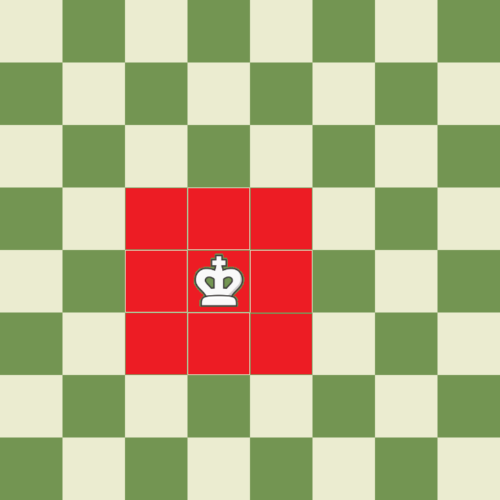The king chess piece is central to the game of chess. Although it can be called one of the weakest pieces on the board, it certainly is the most important. The whole game is about keeping your king safe while trying to take your opponent’s. This article will look at how the king moves around the board, what its role is in the game, and other basics where chess is concerned.
The king chess piece is not quite as mobile as some of the other pieces in the set. It may move one square in any direction: horizontally, vertically, or diagonally. In fact, just because of this very limitation, the king is relatively weak in attack but extraordinarily valuable for defense. Checkmate occurs when the king cannot avoid capture; hence, its movement is important both when attacking and defending.

King in Chess
The king is distinguished from the rest because it’s the only piece that’s never captured. It suffers check or checkmate, meaning that the objective of the game is to checkmate your opponent’s king, wherein it is under direct capture, with no legal movements left to retreat. You can use king chess effectively to support other pieces and protect pivotal squares on the board.

How Many Pieces Are in Chess?
A chess game starts with 32 pieces: 16 for each player. Every side has 1 king, 1 queen, 2 rooks, 2 knights, 2 bishops, and 8 pawns. Of these, the chess piece most essential to the nature of the game is the king, even though it isn’t in terms of either movement or attack.

Chess Board Moves
To be a chess master, one has to have an understanding of the moves on the board. Each piece travels based on its movement criteria, and this case is no different with respect to the king chess piece. The limited movement range of the king requires any player to think carefully to ensure the safety of his or her king while at the same time contemplating how to move other pieces into position to place pressure on the opposing player’s king.
How Does the King Move in Chess?
The king, a royal piece in play, can move only one square to any direction, as mentioned earlier. Constrained as the move might seem, the movement covers strategically well during endgames. It often becomes more active, supporting pawns and seeking out safe spaces when trying to avoid the checkmate in the endgame. Although restrictive in the way it moves, the king’s movement is, as one may say, one of the critical strategies in a game of chess.
In conclusion, although a king cannot make many moves during the game, it is the heart of the game itself. This is precisely the reason why this piece is too invaluable in the said game—to guard your king and menace the opponent’s in a nutshell.









